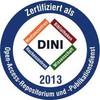Preview |
PDF, English (Iva_Marinovic_09_09_1993_Dissertation)
Download (5MB) | Terms of use |
Abstract
Peritoneal dialysis (PD) is a home-based renal replacement therapy for patients with end stage chronic kidney diseases (CKD5) using the peritoneum as a semi-permeable membrane for solute, toxins and water removal. Despite five decades of PD application, surprisingly little is known about the molecular mechanisms underlying transperitoneal solute and protein transport. Until now, only the function of a water channel, aquaporin1, has been studied in detail. Mathematical models of PD solute transport focused only on the endothelial barrier characteristics, presuming that the mesothelium is no barrier to solute transport. To overcomethis striking lack of knowledge I focused on comprehensive understanding of the transport mechanisms across the peritoneal mesothelium and endothelium, their underlying molecular counterparts and their regulation by CKD5 and PD. Since experimental studies rely on the utilization of adequate in vitro models, I studied the most commonly employed human cell models by means of RNAseq and bioinformatic analysis. These are the immortalized pleural mesothelial cells (MeT-5A), human primary peritoneal mesothelial cells (HPMC), umbilical vein endothelial cells (HUVEC), and human cardiac microvascular endothelial cells (HCMEC). The four different cell lines, demonstrated pronounced differences, as summarized within six functional clusters; also between the mesothelial and endothelial cell types, respectively. They were in part related to cell tissue origin and the immortalization status. Major differences were moreover found in cell migration capacity, cell adhesion propensity, the regulation of angiogenesis, and responsiveness to hypoxia. This analysis therefore provides essential information on the specific suitability of each cell line for addressing research questions in the context of PD and beyond. It demonstrates mesothelial expression of an array of transport related genes, suggesting specific transport functions next to endothelial cells. In the methodological part of the thesis, an optimized experimental workflow has been developed, combining within the same polarized cell monolayer functional transport measurements with protein component visualization by immunocytochemistry and single molecule level microscopy and clustering analyses. This approach increases experimental consistency, reduces workload, and minimizes costs. Applying it, I demonstrated unique cell junction expression patterns in mesothelial and endothelial cells. MeT-5A and HPMC created a stronger barrier against the transport of solutes, ranging from ions to large molecular weights, compared to HCMEC. Single molecule localization microscopy followed by persistent homology analyses showed, that the tight junction anchoring protein, Zonula occludens-1 (ZO- 1) is continuously expressed along the mesothelial cell membrane, while in the endothelial cell membrane it is less frequently present and at lower clustering levels. These in vitro findings indicate that the peritoneal mesothelium acts as a significant barrier alongside the capillary endothelium. Next, the contribution of the mesothelium to solute transport was validated in human peritoneal tissues, in mice, and ex vivo in sheep. In the healthy human peritoneum, the mesothelial surface area was calculated to be smaller than the blood endothelial surface area, except for children aged 2-17 years. The mesothelium was preserved during the first two years of PD with PD fluids with low glucose degradation product (GDP) content. Previous studies indicated poor preservation of the mesothelium when PD fluids with high GDP concentrations were used. Next it was shown that, GDP rich PD fluids downregulate cell junction and transcytotic transporter expression in fat covered omental arterioles protected from direct PD fluid impact. i.e. reflecting systemic effects of GDP. In vitro, the GDP 3,4DGE increased endothelial permeability to ions and 4 kDa dextran. In mice, short-term exposure of the mesothelium to bacterial lipopolysaccharides selectively altered mesothelial morphology and increased peritoneal absorption of 4- and 70 kDa dextrans. Scraping of the mesothelium of sheep peritoneum mounted in Ussing chambers, largely abolished electrical resistance, confirming the ionic barrier function of the mesothelium in another species and suggesting no such function of the submesothelial interstitium. Tight junction (TJ) claudins (CLDN), transmembrane transporters and channels were consistently expressed in the human peritoneal mesothelium and in submesothelial endothelial cells with minor variations across age groups. In children with CKD5, peritoneal mesothelial CLDN2 and arteriolar CLDN3 abundance and in children on PD mesothelial and arteriolar CLDN1 and mesothelial CLDN2 abundance were increased. Arteriolar CLDN2 independently predicted peritoneal small solute transport. Lastly, I for the first time described pharmacological modulation of peritoneal TJ ZO-1. by alanyl-glutamine. Supplemented to PD fluids it preserved endothelial ZO-1 and sealing CLDN5 abundance and the barrier function against 10 and 70 kDa dextran loss, and in mice it increased peritoneal CLDN5 abundance. The present thesis provides major methodological advances with the combination of functional cell barrier testing, immunostaining and single molecule localisation and clustering analysis from a single, polarized cell monolayer. It provides in-depth in vitro, ex vivo and in vivo insights into solute transport across the peritoneum. It demonstrates the functional relevance of the mesothelium, the expression of transport related proteins and regulation by CKD and PD and identifies candidates to be functionally involved in solute transport. These results open new avenues for targeted therapeutic interventions to improve PD efficiency and by this PD sustainability and patient outcomes.
| Document type: | Dissertation |
|---|---|
| Supervisor: | Schmitt, Prof. Dr. med. Claus Peter |
| Place of Publication: | Heidelberg |
| Date of thesis defense: | 28 October 2024 |
| Date Deposited: | 01 Oct 2025 09:33 |
| Date: | 2025 |
| Faculties / Institutes: | Medizinische Fakultät Heidelberg > Universitätskinderklinik |
| DDC-classification: | 570 Life sciences 610 Medical sciences Medicine |
| Controlled Keywords: | Dialyse, Zellkultur, Transport, Genanalyse, Zellkontakt |









